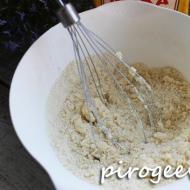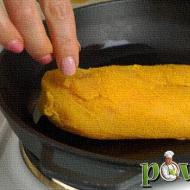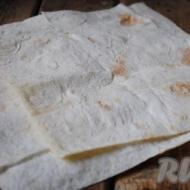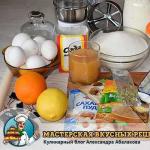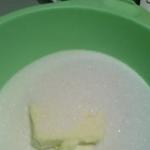
What substance has the chemical formula c2h5oh. Molar mass of ethyl alcohol. Examples of problem solving
Ethanol is considered to be a typical representative of monohydric alcohols; it is often called wine alcohol, ethyl alcohol, or simply alcohol. In the international classification of food additives, ethanol is registered under code E1510 and belongs to the group of additional substances.
Chemical formula C 2 H 5 OH or CH 3 -CH 2 -OH.
In small quantities it “works” in the human body as a natural metabolite, but even in these cases it should be remembered that ethanol is a depressant that has a depressing effect on the human nervous system. Ethanol has narcotic and toxic properties, which is reflected in the ability to cause stupor, insensitivity to pain, and agitation. Ethanol is a strong carcinogen; excessive consumption of ethyl alcohol and products containing it leads to gastritis, stomach ulcers, cancer of the esophagus and stomach, cirrhosis of the liver and exacerbation of cardiovascular diseases. The most common diseases associated with alcohol consumption are alcoholism and clinical depression.

In the food industry, E1510 is used for the production of strong alcoholic drinks (, etc.) and soft drinks produced by fermentation (,). It is used as a solvent for food flavorings and as a preservative in the production of confectionery products and bread baking.
Ethanol is also used in medicine - as a drying and disinfectant, cooling and warming agent; in the perfume industry - as a universal solvent for the production of perfumes and cosmetics; in the chemical industry - for the production of detergents.

Use of E1510 in Russia
On the territory of the Russian Federation, the use of E1510 Ethanol as a food additive is permitted in quantities strictly regulated by SanPiN.
All alcoholic products are of a certain composition based on ethyl alcohol, aromatic additives and coloring elements. Unlike high-quality products, the main substance in the surrogate is methanol, which has a strong toxic effect on the body. The ability to correctly determine whether methyl or ethyl alcohol is in an alcoholic beverage will help save not only your health, but also your life.
Ethyl alcohol or ethanol is the basis of every alcoholic drink, from beer to exotic drinks.
One of the most terrible alcohol poisoning is the use of methyl (technical) alcohol instead of ethyl (food) or medical alcohol
The scientific name for alcohol containing ethyl is ethanol Its chemical formula is C2H5OH. This substance is recognized as psychoactive and is used as an antidepressant. Ethanol is mainly used in the following industries:
- Medicine. Alcohol-containing solutions are used for disinfection.
- Production. The main raw material for the production of solvents and similar products.
- Petroleum products. Ethanol is used to create fuels and lubricants.
The main difference between ethyl alcohol and methyl alcohol is that only organic products are used for its production. Ethanol is formed as a result of their fermentation, for which special yeast is used. The resulting solution goes through several stages of additional processing and distillation. After passing through all stages of filtration, the ethanol content in the resulting solution does not exceed twenty percent.
Methyl alcohol
The main active component of methyl alcohol is methanol This composition has the chemical formula CH3OH, and in its essence is a real poison. Its entry into the body can lead to severe poisoning, as a result of which various pathologies develop, sometimes the use of methanol leads to death.
This monohydric alcohol is obtained by treating wood with formic acid and special substances. The composition is used as a chemical solvent. Very often, such a solution is based on formaldehyde. The main difference in the effect of these compounds on the body is that ethyl is much more easily absorbed by the body. When methyl enters the esophagus, oxidation processes begin, which leads to the formation of harmful toxins.
The first organs that are exposed to the harmful effects of methyl are the eyes and the nervous system. Blindness is one of the main symptoms of drinking low-quality alcoholic beverages.

The problem is that industrial alcohol is no different in taste, smell and color from food alcohol.
How to distinguish ethyl alcohol
The use of low-quality alcoholic products does not lead to such destructive consequences as the use of methyl alcohol. What is the difference between ethyl alcohol and methyl alcohol is quite difficult at first glance. Both of these compositions are identical in taste and color of the liquid.
Methanol is one of the most powerful poisons known today. Its use depresses the nervous system and has a detrimental effect on blood vessels. When complications caused by the use of methyl are expressed in the visual organs, this leads to the fact that a person completely loses vision. It is very difficult to reverse this process. The use of methyl alcohol can provoke the following reactions:
- headache;
- a sharp deterioration in health;
- the appearance of pain in the abdominal area;
- loss of orientation in time and space.
Consuming a surrogate can cause short-term memory loss, attacks of dizziness and loss of consciousness. When the amount drunk exceeds one hundred grams, death is possible.
One way to test ethyl or methyl alcohol is to set the drink on fire. Ethyl alcohol burns with an even flame that has a blue tint. In contrast, methyl has a green flame color.

Methanol is usually found in solvents, antifreeze liquids and other household chemicals that are not intended for internal use.
You can determine methanol in alcohol using ordinary potatoes. To do this, a small piece of peeled root vegetable is added to a glass of liquid. Unfortunately, the oxidation process takes a certain period of time. However, as a result of this test, the potato may change color. When a potato changes its color to pale pink, this is a 100% sign of methyl content in the liquid.
Another chemical test of the solution can be done at home. To carry it out, you need copper wire. It is heated until reddened over a fire, and then immediately dipped into a container with liquid. As a result of chemical processes, a sharp, unpleasant odor may appear. Its presence indicates that the mixture contains methanol. Ethyl behaves completely differently in these tests. The mixture begins to emit a subtle apple aroma.
A similar reaction can be achieved by another method. To do this, you need a small piece of cotton wool, which is thoroughly soaked in the solution; after the cotton wool has absorbed the solution, it must be set on fire. As a result of the combustion process, the same specific smell is formed, with which you can determine the type of alcohol contained in the product.
How to determine methyl alcohol
Methyl alcohol is a highly toxic substance that belongs to the group of alcohols that have a monoatomic structure. To begin pathological changes in the body, it is enough to consume ten milliliters of this substance once. As a result of this effect on the body, the issue of analyzing alcoholic beverages for methanol content takes on an important form for life. Any person with the necessary knowledge in the field of chemistry will answer how to distinguish methyl alcohol from ethyl alcohol, but what should a person do when all the necessary laboratory equipment is not at hand.

Buy alcohol in trustworthy stores, where the risk of becoming a victim of counterfeiting is much lower than at dubious points of sale
One of the most dangerous factors of methyl alcohol is that it is completely identical in appearance to the composition contained in ethyl. Their main difference is the principle of action on the body. As a result of the action of methanol, acute poisoning with toxic substances occurs.
It is quite easy to distinguish one alcohol from another using any of the methods described above. But how to distinguish methyl alcohol from ethyl alcohol if the product contains them in equal quantities or with a certain ratio. It is worth immediately noting that the use of such a product is extremely undesirable, and its tests can only be carried out in laboratory conditions. Conducting such studies is a priority task to confirm or refute the methanol content in ethyl alcohol.
To determine the quantity and quality of alcohol contained in alcohol in laboratory conditions, special “iodoform” tests are used.
In addition, a technique is used by which methyl is converted into substances such as formaldehyde. For such an experiment, it is necessary to have a special test tube, the top of which contains a pipe for removing gases. Sulfuric acid with the addition of potassium permanganate is poured into such a test tube. These two substances react to form formaldehyde. Different exposures to this substance lead to different reactions, which in most cases confirms the presence of methanol. At home, the only method left is using copper wire.
Of course, checking the composition done at home will not give a 100% result. Recently, mixtures have become common where medical alcohol is used to mask the methyl. Such a composition may not exhibit certain reactions to all manipulations.
DEFINITION
Ethyl alcohol (ethanol)- a complex substance of organic nature. Representative of the homologous series of monohydric alcohols.
The structure of the benzene molecule is shown in Fig. 1. Under normal conditions it is a colorless volatile liquid with a characteristic odor and pungent taste. It mixes with water and various organic solvents, and also dissolves many substances (often organic in nature).
Rice. 1. The structure of the ethyl alcohol molecule.
The gross formula of ethyl alcohol is C 2 H 5 OH. As is known, the molecular mass of a molecule is equal to the sum of the relative atomic masses of the atoms that make up the molecule (we round off the values of the relative atomic masses taken from D.I. Mendeleev’s Periodic Table to whole numbers).
Mr(C 2 H 5 OH) = 2×Ar(C) + 6×Ar(H) + Ar(O);
Mr(C 2 H 5 OH) = 2×12 + 6×1 + 16 = 24 + 6 + 16 = 46.
Molar mass (M) is the mass of 1 mole of a substance. It is easy to show that the numerical values of the molar mass M and the relative molecular mass M r are equal, however, the first quantity has the dimension [M] = g/mol, and the second is dimensionless:
M = N A × m (1 molecule) = N A × M r × 1 amu = (N A ×1 amu) × M r = × M r .
It means that the molar mass of ethyl alcohol is 46 g/mol.
Examples of problem solving
EXAMPLE 1
| Exercise | Calculate what mass of water will be obtained if 16 g of oxygen reacts with hydrogen? |
| Solution | Let's write down the equation for the reaction between hydrogen and oxygen: 2H 2 + O 2 = 2H 2 O. Let's calculate the amount of oxygen substance using the formula: n(O 2)= m (O 2)/ M(O 2). To do this, it is necessary to indicate the molar mass of oxygen (the value of the relative atomic mass taken from the Periodic Table of D.I. Mendeleev, rounded to the nearest whole number). As is known, the molar mass of a molecule is equal to the sum of the relative atomic masses of the atoms that make up the molecule (M = Mr): M(O 2) = 2×Ar(O) = 2×16 = 32 g/mol. Then, the amount of oxygen substance will be equal to: n(O 2) = 16 / 32 = 0.5 mol. According to the reaction equation n(O 2) : n(H 2 O) = 2: 2, this means: n(H 2 O) = n(O 2) = 0.5 mol. Let's find the molar mass of water (the assumption specified when calculating the molar mass of oxygen is valid in this case): M(H 2 O) = 2×Ar(H) + Ar(O) = 2×1 + 16 = 2 +16 = 18 g/mol. Let's determine the mass of water: m(H 2 O) = n (H 2 O) × M (H 2 O); m(H 2 O) = 0.5 × 16 = 8 g. |
| Answer | The mass of water is 8 g. |
EXAMPLE 2
| Exercise | Calculate what volume of oxygen (n.o.) is required to obtain sulfur oxide (VI) by reaction with sulfur oxide (IV) weighing 6.4 g? |
| Solution | Let us write the equation for the reaction between oxygen and sulfur oxide (IV), which results in the formation of sulfur oxide (VI): 2SO 2 + O 2 = 2SO 3. Let's calculate the amount of sulfur oxide (IV) substance using the formula: n(SO 2)= m(SO 2)/ M(SO 2). To do this, it is necessary to indicate the molar mass of sulfur oxide (IV (the value of the relative atomic mass taken from the Periodic Table of D.I. Mendeleev, rounded to a whole number). As is known, the molar mass of a molecule is equal to the sum of the relative atomic masses of the atoms that make up the molecule ( M = Mr): M(SO 2) = Ar(S) + 2×Ar(O) = 32 + 2×16 = 32 + 32 = 64 g/mol. Then, the amount of sulfur oxide substance (IV will be equal to: n(SO 2) = 6.4/ 64 = 0.1 mol. According to the reaction equation n(SO 2) : n(SO 3) = 2: 2, it means: n(SO 3) = n(SO 2) = 0.1 mol. Let's find the molar mass of sulfur oxide (VI) (the assumption indicated when calculating the molar mass of oxygen is valid in this case): M(SO 3) = Ar(S) + 3×Ar(O) = 32 + 3×16 = 32 + 48 = 80 g/mol. Let's determine the mass of sulfur oxide (VI): m(SO 3) = n (SO 3) × M (SO 3); m(SO 3) = 0.1 × 80 = 8 g. |
| Answer | The mass of sulfur oxide (VI) is 8 g. |



